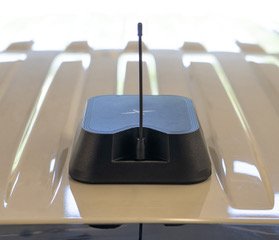When it comes to vehicle antennas, especially for fleets in emergency services, utilities, or commercial sectors, things can get a bit… cluttered. Not literally, but in terms of all the different antennas a vehicle might need on its roof. Taoglas is addressing this headache with its new Patriot series—a compact, multi-function antenna designed to bring multiple networks and services into one neat package.
Streamlining Roof Space and Connectivity
The Patriot antenna is quite an interesting piece of engineering. It’s built to integrate up to 18 different antenna elements inside a single, low-profile housing. Imagine replacing several separate antennas on your fleet vehicles with just one—sounds like a huge timesaver and space saver, right? But here’s the catch: it’s not just about saving space. It keeps the original functionality of existing antennas—like those used on the Ford Interceptor—while adding multi-radio connectivity. That means less drilling and modifications on the vehicle roofs, which is always a relief for upfitters and vehicle managers.
I have to say, this approach feels smart because beyond reducing installation time and cost, it also stops the need for patching or worrying about vehicle resale appearance due to holes or mismatched parts. It’s a nice touch, showing Taoglas has considered the whole lifecycle of the vehicle, not just the tech specs.
Also read: Nigeria’s 5G Reality: Beyond the Hype, Into the Practical
What’s Packed Inside This Tiny Housing?
Now, the tech packed inside is pretty comprehensive. The Patriot supports 5G and 4G cellular bands ranging between 600 MHz up to 6 GHz, which covers a huge spectrum. On top of that, it includes dual-band GNSS (for navigation precision), Wi-Fi operating in multiple frequency bands (2.4, 5.8, and even 7.1 GHz), and something called SDARS at 2.3 GHz—the satellite digital audio radio service. Pretty much everything a connected vehicle might need: broadband, navigation, telemetry—you name it.
It also supports land mobile radio (LMR) and TETRA frequencies, meaning it can handle voice communications used by many emergency and utility services. There’s even a dedicated whip element customizable in length to meet various frequency demands. It doesn’t just stop at being multifunctional; it’s completely scalable and modular. Taoglas offers configurations with anywhere from 17 to 18 integrated elements and plans more variants tailored to customer needs. This kind of flexibility really catches my attention because it caters to very specific operational requirements without forcing one-size-fits-all solutions.
Design That Thinks Like a Vehicle Owner
Beyond the tech, the antenna’s physical design got some thought put into it. The housing, measuring roughly 20 cm by 18 cm and varying in whip height, fits snugly between the vehicle’s roof ribs and uses the existing mounting hole from OEM setups. This means no odd-size gaps or extra holes—just a clean fit. The foam gasket they engineered ensures a solid seal against the curved roof, which is more important than it sounds because you don’t want water, dirt, or interference creeping in.
Plus, the antenna is rugged. It’s got an IK08 and IP69K rating, so it should handle strong impacts and even aggressive washing without issue. Aerodynamics have been considered, too, reducing drag and wind noise while keeping the vehicle looking good. I appreciate the fact that it’s offered in several colors to match different vehicle exteriors—it’s a small but thoughtful detail.
Customization goes beyond looks, too. Users can specify cable types, lengths, and connectors to fit different vehicle configurations or installation preferences. This isn’t some generic product shoved onto all vehicles but rather a system that adapts to real-world customer needs.
Also read: ETSI Launches Industry Group to Tackle 6G Multiple Access Techniques
What This Means for Fleets and Upfitters
If you think about it, the Patriot series could really shift how fleets approach their antenna setups. Instead of juggling multiple antennas, installers only deal with one that covers everything. This sort of simplification is especially attractive for emergency service providers who rely on several layers of communication. It can reduce failures related to too many components, speed up vehicle prep times, and cut costs—not just in hardware but labor and downtime.
That said, I do wonder how easily the antenna will be serviced or upgraded once installed. With so many elements combined, troubleshooting might get complex if something goes wrong. But Taoglas seems aware of variety in customer needs, so possibly support and replacement parts will be streamlined.
For those interested, more detailed specs and ordering options are available on Taoglas’s website. There’s even a possibility to pre-order the Patriot through GetWireless right now—which hints at confidence in demand and readiness for deployment.














Leave a comment